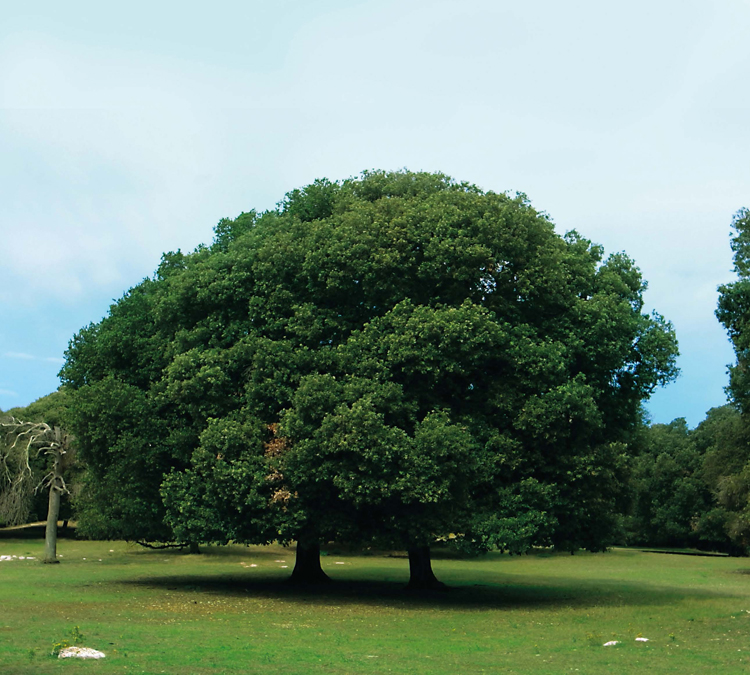
The etymology of “garden” (gan) in Hebrew is the same as “to preserve” or “to protect” (le-hagen). The passage from Deuteronomy (20:19-20) forbids destroying fruit trees even during war or when sieging a city. The request (Numbers 35:2-5) of leaving a one-thousand-cubit-wide belt around a city where no houses or farming are allowed in order to improve “the beauty of the city” explains Ovadià da Bertinoro (Bertinoro, 1455 – Jerusalem, 1516). It is the request (Qohelet Rabbà) not to cause irreparable damage: “When the Almighty created Adam, he took him around the garden of Eden. He told him: ‘Look at my works, look how beautiful, how marvelous they are! I made them for you. Be careful not to strip or destroy my world, because if you do no one will be able to put it right”.”
These are the footprints to explore the road of environmental sustainability in the Jewish world. All three monotheist religions (as we have seen in the articles published in Renewable Matter issues 4, 6/7 and 10) share the aspiration to take care of creation.
But these guidelines had to put up with a tormented history and interpretations that ended up leading humanity in the opposite direction.
On the tide of the alarm caused by the biblical proportions that climate change risks assuming today, the religious world is shaken by a flurry of environmental worries expressed differently according to the tradition of each community and the organizational models chosen by each religion. With Laudato si’, the Pope has given to this issue an unprecedented strong signal also referring to the need to concretely overcome the problem and revive the use of renewable sources and matter recovery as opposed to the culture of waste. The Muslim world is characterized by contradictory forces as far as modernity as well as its commitment to find a solution to environmental issues are concerned.
What is the sensitivity of Hebraism faced with the very real risks that no ancient text could foresee and that must then be judged interpreting in a modern fashion its teachings? About one third of Hebraism’s precepts is ascribable to the protection of health and the environment, but how are they applied? Rabbi Gianfranco Di Segni highlights some elements that can provide some keys to interpret them. For instance, the relationship with food: “In the beginning mankind was vegetarian, in the messianic era it will go back to that and in any case nutrition must be obtained without casing suffering to animals. Moreover Talmud specifies the distances between houses and activities with the most environmental impact as far as pollution and noise are concerned. These are all signs, together with the great respect for trees, that show an ancient attention to these issues that nowadays is more topical than ever.”
Ancient attention with reference to detailed aspects, new problems concerning global aspects. How can this gap be bridged? “It is not easy to answer for two reasons. First, ‘how to solve the climate problem’ is not the main focus of Hebraism,” Jeremy Bensteins says. “Second, there are sixteen million Jews, many communities and conflicting opinions on topical issues: it is difficult to say what the Jewish world thinks as a whole. For instance, in Philadelphia, there is a group very much committed to environmental issues, but there are also others that think differently. But in a word, we are not doing enough.”
Is there a theoretical reference that can act as focal point for this renewed attention? “The concept of stewardship, mentioned by Lynn White in ‘The Historical Roots of Our Ecological Crisis’,” Benstein continues. “The idea of a leadership obtained by putting ourselves in the service of others. Starting from shared goods to build managing strategies for the common interest. We are not faced with a zero-sum game where what is gained by one person must be lost by someone else. It is rather a win-win perspective where we can only win together.”
But the place where you live seems to follow the opposite logic: the Arab-Israeli conflict is also fuelled by tensions for the control of environmental resources, starting from water. “I think there is personal responsibility and we must pursue the goal of environmental justice. If Palestinians suffer for lack of water there can be no peace and no sustainability in the whole region. And this is an indication that I get from the Bible: we have just celebrate Passover that is freedom from slavery. Those who fled slavery in Egypt can only oppose any kind of slavery: this is the root of the call for environmental and social justice.”
Heschel Center for Sustainability, www.heschel.org.il/heschelen-media
Lynn White, “The Historical Roots of Our Ecologic Crisis”, Science 10 March 1967, v. 155, n. 3767, pp. 1203-1207; oi: 10.1126/science.155.3767.1203

